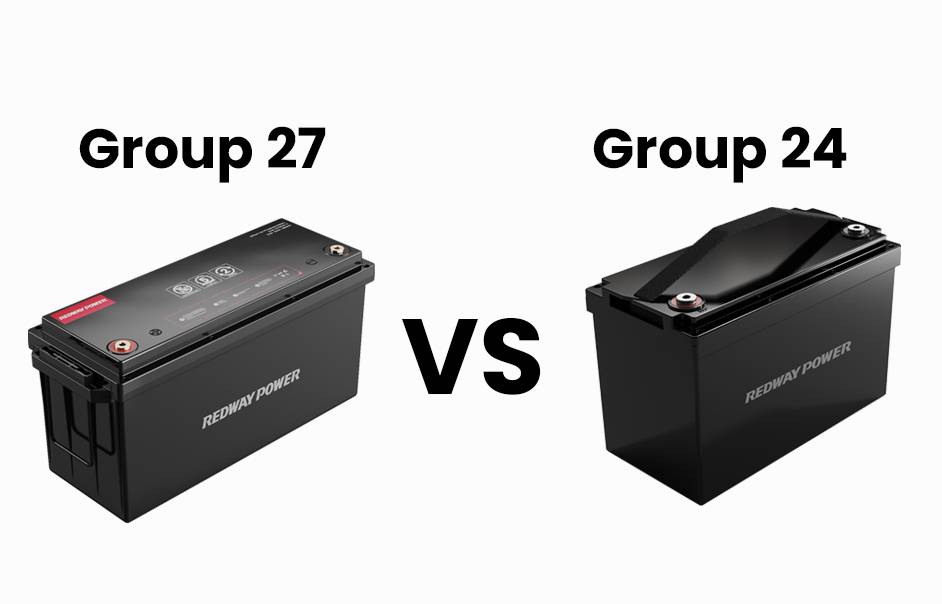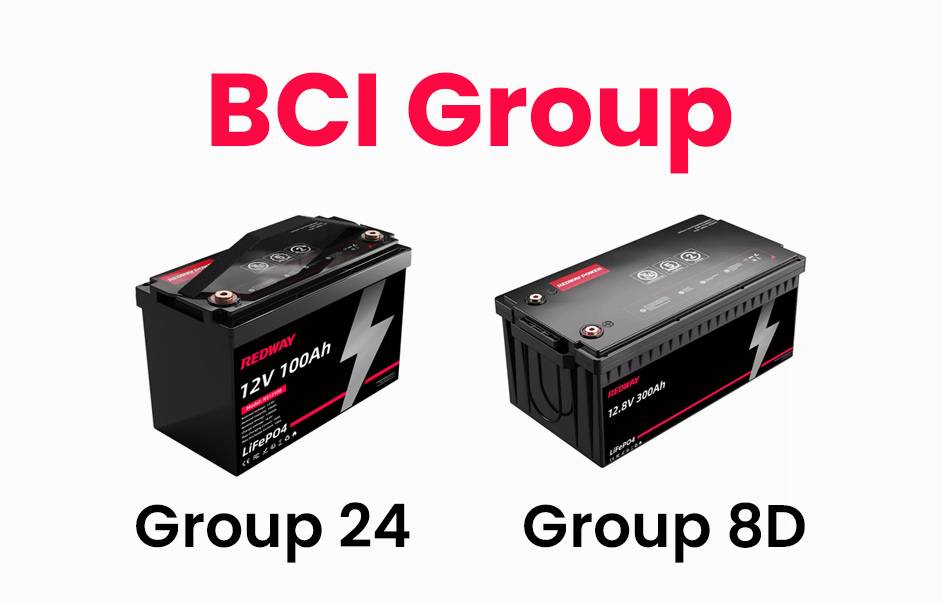Have you ever been stranded with a dead car battery and realized you have no idea what size replacement to get? Understanding your car battery’s BCI group size is crucial when it comes to finding the right fit for your vehicle. In this blog post, we will delve into everything you need to know about BCI Group Size Charts for car batteries, including why they matter and how to determine the correct size for your ride. Let’s dive in!
What is a BCI Group Size Chart?
A BCI Group Size Chart is a standardized system used to categorize car batteries based on their physical dimensions and electrical characteristics. Each group size corresponds to specific measurements, such as length, width, and height, as well as terminal placement. These charts help consumers easily identify the correct battery size for their vehicles without confusion or guesswork.
BCI stands for Battery Council International, an organization that established these guidelines to ensure compatibility between batteries and vehicles. By referencing the BCI Group Size Chart designated for your car’s make and model, you can quickly narrow down the options available in the market. This simplifies the battery selection process and ensures a proper fit every time you need a replacement.
Also read: BCI Battery Group Size Chart (Group 24, 27, 31, etc)
Why is it important to know your car battery’s BCI group size?
Are you familiar with your car’s battery BCI group size? This simple code holds valuable information about the size and specifications of your vehicle’s battery. Knowing this crucial detail can make a significant difference in ensuring that you purchase the right replacement battery when needed.

Car batteries come in various sizes, shapes, and capacities to fit different vehicles. By identifying your car battery’s BCI group size, you can easily narrow down the options when it comes time to replace it. Choosing an incorrect size could lead to compatibility issues or even damage to your vehicle.
Understanding your car battery’s BCI group size is essential for maintaining optimal performance and longevity of your vehicle. It ensures that you select a replacement battery that aligns perfectly with the power requirements of your specific make and model.
Stay informed about your car battery’s BCI group size – it’s a small detail that can have a big impact on keeping your vehicle running smoothly.
How to find your car battery’s BCI group size?
When it comes to finding your car battery’s BCI group size, the process is simpler than you might think. Start by locating your vehicle’s owner’s manual – it often contains information about the recommended BCI group size for your specific make and model.
If you don’t have access to the manual, another option is to pop open the hood of your car and locate the existing battery. Look for a label or markings on the battery that indicate its BCI group size.
If you can’t find any information on the battery itself, you can always measure its length, width, and height to determine its size. This will help you identify which BCI group size your current battery falls under.
Remember, knowing your car battery’s BCI group size is crucial for ensuring that you purchase a replacement that fits perfectly and functions efficiently in your vehicle.
What happens if I put a higher CCA battery in my car?
Putting a higher Cold Cranking Amps (CCA) battery in your car can actually be beneficial. The CCA rating indicates the battery’s ability to start your vehicle in cold temperatures, so a higher CCA could provide more power for easier starts during winter. However, if you frequently drive in warmer climates, a significantly higher CCA may not be necessary and could potentially be overkill for your needs. It’s essential to consider your specific driving conditions when selecting a battery with the appropriate CCA rating for optimal performance.
Can I use a different battery group size?
When it comes to choosing a battery for your car, you might wonder if you can use a different group size. The battery group size refers to the physical dimensions and terminal locations of the battery. It’s essential to choose the correct group size recommended for your vehicle by the manufacturer.

Using a different group size could lead to compatibility issues with how the battery fits in your car’s battery tray or connects to your vehicle’s electrical system. A larger or smaller group size may not properly secure in place, potentially causing damage while driving.
Mismatching the group size could also impact performance and longevity. An incorrectly sized battery may struggle to provide sufficient power or fit snugly into its designated space, leading to premature wear and tear on both the battery and other components.
To avoid any potential problems, always consult your vehicle’s manual or speak with a professional before opting for a different group size when replacing your car’s battery.
What doesn’t the BCI number tell us about a battery?
The Battery Council International (BCI) number provides important information about a battery’s group size, capacity, and dimensions. However, there are aspects of a battery that the BCI number doesn’t reveal.
One thing the BCI number doesn’t tell us is the age or condition of the battery. Even though two batteries may have the same BCI number, their performance and lifespan can vary based on factors like usage history and maintenance.
Additionally, the BCI number doesn’t indicate whether a battery is suitable for specific vehicles or applications. It’s important to consider not only the group size but also factors like cold cranking amps (CCA) and reserve capacity when choosing a battery for your car or equipment.
Furthermore, the BCI number alone doesn’t provide details about advanced features such as AGM technology or deep cycle capabilities. These features can significantly impact how well a battery performs in certain conditions or applications.
What happens if I use the wrong group size battery?
Using the wrong group size battery in your vehicle can lead to various issues. The battery may not fit properly in the designated space, causing potential damage due to vibrations or movement while driving. Additionally, a mismatched battery could result in improper connections, leading to electrical problems and potentially damaging the vehicle’s electrical system.

Moreover, using a battery with incorrect specifications can impact the performance of your car. It might struggle to start or run efficiently, affecting overall reliability and longevity. Furthermore, an ill-fitting battery could also pose safety risks if not securely installed within the engine compartment.
To avoid these complications, it is crucial to refer to the manufacturer’s recommendations for your specific vehicle make and model when selecting a new battery. Ensuring compatibility will help maintain optimal functionality and prevent any unnecessary damage or safety hazards associated with using an incompatible group size battery.
Can I put a smaller group size battery in my car?
When it comes to choosing a battery for your car, size matters. But what happens if you consider using a smaller group size battery than recommended?
A smaller group size battery may not provide enough power to start your vehicle reliably. It might struggle in cold weather or when running multiple accessories simultaneously. This can lead to issues like slow cranking or even failure to start.
Additionally, a smaller battery might not fit securely in the designated space, potentially causing it to move around and become damaged while driving. This could also impact its ability to hold a charge over time.
It’s essential to follow the manufacturer’s recommendations for the correct group size battery for your car. Using a smaller one may save you money upfront but could end up costing more in repairs down the line.
Can the wrong size battery damage the alternator?
Using the wrong size battery in your vehicle can potentially lead to damaging effects on the alternator. When a battery that is too small or too large for your car’s specifications is installed, it can cause strain on the alternator as it tries to either overcompensate or work harder to charge or maintain the incorrect battery. This added stress on the alternator may result in overheating, decreased lifespan, and overall reduced performance.
The alternator plays a crucial role in powering various electrical components of your vehicle and keeping the battery charged. Therefore, ensuring that you have the correct group size battery installed is essential for maintaining optimal functioning of both the battery and alternator. It’s always recommended to consult with a professional mechanic or refer to your vehicle’s manual to determine the appropriate group size battery needed for your specific make and model.
How do I know what group size battery I need?
Understanding battery size charts is essential for ensuring that your vehicle runs smoothly and efficiently. By knowing what happens if you put a higher CCA battery in your car, understanding the implications of using the wrong group size battery, and being aware of how to determine the correct group size for your vehicle, you can make informed decisions when it comes to selecting the right battery. Remember, choosing the appropriate battery size is not only crucial for your car’s performance but also plays a significant role in preventing potential damage to both your vehicle and its components. So next time you’re in need of a new battery, refer back to this guide to make sure you’re making the best choice for your car!





